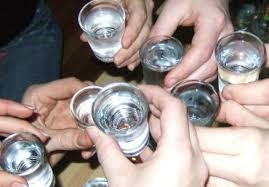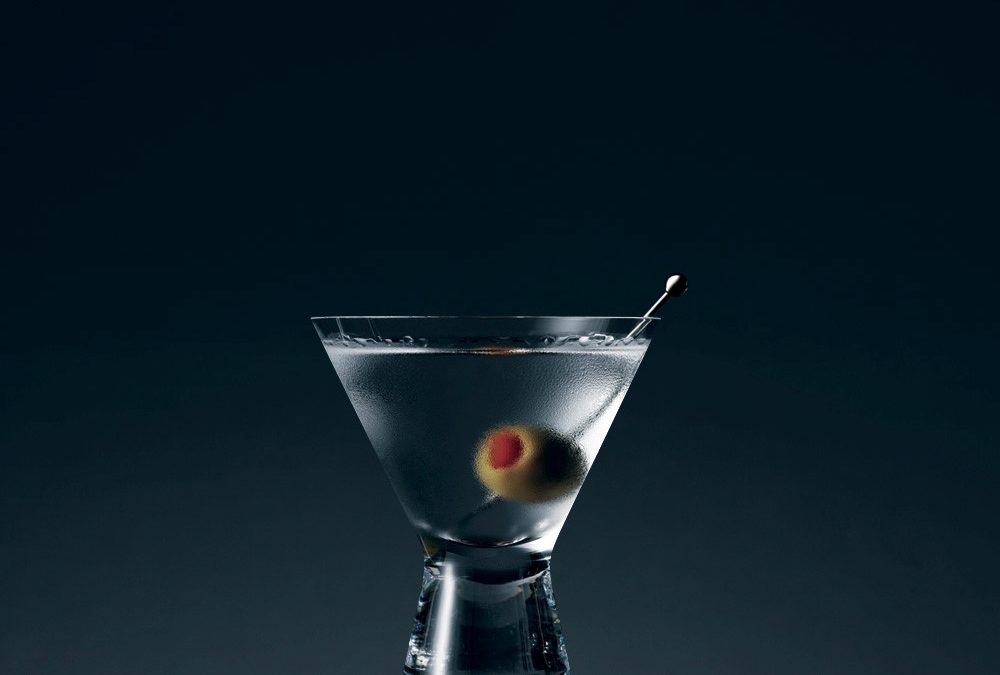By Bob Lipinski
“I never have more than one drink before dinner,” said Bond. “But I do like that one to be very large and very strong and very cold and very well-made.” (James Bond, Casino Royale “When referring to a martini”)
Vodka is an alcoholic distillate from a fermented mash of primarily grain; it is distilled at or above 190-proof, bottled at not less than 80-proof (except for flavored vodka), and may be processed further to extract all congeners with activated charcoal. Some vodkas display certain characteristics in color, aroma, and taste.
Most vodka is not aged, and U.S. federal regulations do not permit age claims, distillation date, or vintage date. Vodka may be stored in containers of stainless steel, porcelain, concrete, glass, paraffin, or any other neutral material—rarely wood. Vodka does not need aging because of the neutrality of the spirit (190-proof or higher) and filtering through charcoal, which renders it free of congeners that would otherwise need barrel aging to soften.
Vodka seems to have first appeared in either Russia or Poland around the twelfth century, when it was known as zhizenennia voda (water of life) in the Russian monastery-fort of Viatka. Vodka comes from the Russian word for water, voda or the Polish word wódka (in Polish the w has a v sound). The suffix “ka” was added to the root word centuries later. By the fourteenth century, vodka was used as a beverage; formerly, it was used in perfumes and cosmetics. However, it was used as the base ingredient of many wonder drugs or cure-all elixirs. During the fifteenth century, Poland produced many types of vodka and several “grades,” which varied according to the number of times the vodka was distilled and refined. Until the sixteenth century vodka was known in Poland as gorzale wino or gorzalka, which meant “scorched” or “distilled wine,” to distinguish it from beverages made from medicinal vodkas. At that time, rye was the chief ingredient in most vodka production. Also, in the fifteenth century Swedish distillers began using wheat to produce neutral spirits they referred to as “brännvin” or burnt wine. This brännvin was originally used for medicinal purposes—but later, because of the pleasing effects, gained popularity for general consumption.

Enjoying Vodka
The early vodkas were strongly flavored and therefore it became a common practice to add herbs, spices, and fruits to mask the sometimes harsh, raw taste. Vodka is generally made from grains- (barley, corn, rice, rye, wheat), although apples, beets, grapes, honey, maple syrup, molasses, plums, potatoes, and sugarcane can be used. Vodka can be made from virtually any ingredient that contains starch or sugar.
Vodka was originally made from the most plentiful and least expensive ingredients available, which in most cases was rye or the potato. Its popularity soared in the 1820s because of more abundant and better potato crops. The potato is assumed to be a cheap and plentiful ingredient. In fact, only special varieties of potatoes (generally Stobrawa, Glada, Mila, and Solist, to name but a few) with a starch content of about 22 percent (twice that of boiling potatoes) are used. These potatoes are more expensive to harvest and prepare for distillation than grain. It is estimated that it takes about 10 pounds of potatoes to produce one liter of vodka. Using potatoes as a base is the most complicated because of the difficulty of breaking down the starches and converting to fermentable sugars. Potato mash produces more flavorful and heavier vodka. However, nowadays, grain rules as the main base ingredient for vodka throughout the world. The early vodkas, even if made from grains, were strongly flavored, and therefore, it became a common practice to add herbs, spices, and fruits to mask the sometimes harsh, raw taste of the grain. In 1564, King Jan Olbracht passed a law that allowed every citizen to make vodka at home. These vodkas were made and flavored with whatever ingredients were in abundance. In 1870, the Russian czar hired a chemist, Theodore Lowitz, to produce vodka more hygienically. He invented a technique for purifying vodka by filtration though charcoal.

Shot of Vodka
I like vodka served directly from the freezer Arctic cold, served in Y-shaped glasses or ryumochki (small shot glasses) and downed in one gulp. A vodka martini, with plenty of ice, some dry vermouth and olives gets me going. By the way vodka won’t freeze because of the high alcohol level, and it will be instantly at the right temperature for mixing your favorite cocktail without melting the ice cubes.
Everyone has their favorite vodka brands and I’m no exception. I especially enjoy Boru (Ireland), Ketel One (Netherlands), Luksusowa (Poland), Monopolowa (Austria), Stoli Elit (Latvia), Vincent Van Gogh (Netherlands), and Zubrówka (Slavic Countries).
“Before I start to write, I always treat myself to a nice dry martini. Just one, to give me the courage to get started. After that, I am on my own.” (Elwyn Brooks “E.B.” White, 1899-1985, American writer, New Yorker Magazine)
Bob Lipinski is the author of 10 books, including “101: Everything You Need To Know About Whiskey” and “Italian Wine & Cheese Made Simple” (available on Amazon.com). He consults and conducts training seminars on Wine, Spirits, and Food and is available for speaking engagements. He can be reached at www.boblipinski.com OR bkjm@hotmail.com


 Bob Lipinski, author of 10 books; writes, consults, and conducts training seminars on Wine, Spirits, and Food and is available for speaking engagements.
Bob Lipinski, author of 10 books; writes, consults, and conducts training seminars on Wine, Spirits, and Food and is available for speaking engagements.
Recent Comments